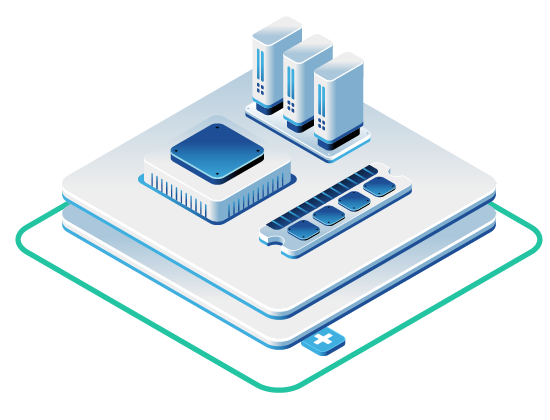Cold start latency refers to the initial delay encountered when an AI model is loaded and executed after a period of inactivity or when it is first deployed. This latency is caused by the need to allocate compute resources, load model weights into memory, initialize inference runtimes, and establish any necessary data pipelines.
In public AI services delivered through managed APIs, this process is abstracted and amortized across a large user base. Users rarely experience cold starts directly because models are preloaded and systems are scaled for continuous availability.
In contrast, private environments require the end user or operator to manage these aspects explicitly. Cold start latency becomes a more visible and impactful factor, especially when infrastructure is deployed on-demand to optimize resource usage or reduce costs.
Causes of Cold Start Latency
- Model Weight Loading: Large language models can reach tens of gigabytes in size. Loading these weights from disk into memory is a time-consuming step, especially when not optimized through memory mapping or persistent RAM usage.
- Container Initialization: Inference services often run in containers or virtual machines. Starting a new container, attaching GPUs via passthrough or mediated devices, and initializing inference frameworks like PyTorch or TensorRT can introduce measurable delays.
- Runtime Compilation: Some inference engines perform just-in-time compilation or kernel selection based on the underlying hardware. This compilation step increases the time-to-first-token in private environments where workloads are not always pre-optimized for the exact hardware configuration.
- Data Pipeline Setup: Tokenizers, decoders, and other preprocessing/postprocessing steps must also be initialized. In distributed systems, network-attached storage or API-based preprocessing may further extend this delay.
Why It Matters in Private Environments
Private environments often lack the scale to maintain always-on model services for every possible inference request. This is especially true when many different models are deployed concurrently, requiring dynamic allocation of compute resources. As a result, they rely on on-demand resource allocation. This makes cold start latency more visible and impactful, particularly in applications requiring prompt responses, such as chat interfaces or low-latency decision-making systems.
Whereas public AI services can spread infrastructure costs and performance optimizations across many tenants, private operators may experience large performance variations between warm and cold inference calls. For example, a model might respond in under 100 milliseconds when warm but take 5 to 20 seconds when cold.
Mitigation Strategies
- Model Preloading: Keep frequently used models loaded in memory on reserved hosts. This requires careful planning of GPU memory usage but eliminates the loading phase.
- Pre-warmed Containers: Maintain idle, initialized containers that are ready to receive inference requests immediately. This approach increases idle resource consumption but greatly reduces response time variability.
- GPU Sharing with MIG or Time-Slicing: Allow preloaded models to reside in persistent GPU instances using NVIDIA’s Multi-Instance GPU or time-slicing modes, minimizing container spin-up delays.
- Memory Mapping and Optimized Storage: Use memory-mapped model formats or faster local storage to reduce weight loading times. One example is Hugging Face’s
safetensors, which supports safe and efficient memory mapping of model weights. Another is the GGUF (GPT Generated Unified Format) used with libraries like llama.cpp, designed for fast model loading with low overhead. Additionally, TensorRT engines stored on NVMe devices can also reduce cold start delays. - Runtime Configuration Tuning: Disable unneeded compilation steps or explicitly define kernel profiles for known hardware to bypass runtime selection overhead. For example, in TensorRT, specifying the exact GPU architecture and precision mode ahead of time avoids time-consuming runtime optimizations during the first inference request.
Observability and Planning
Cold start latency is not always accounted for in model benchmarking. Operators should instrument their inference pipelines to track first-request latency separately from sustained throughput. This data is critical for sizing infrastructure appropriately and ensuring consistent application performance.
In private environments with tailored workloads and deliberate resource use, managing cold start latency helps maintain consistent and efficient AI inference.
Interested in GPU Servers and Clusters?
GPU Server Pricing
High-performance GPU hardware with detailed specs and transparent pricing.
Schedule a Consultation
Let’s discuss your GPU or AI needs and tailor a solution that fits your goals.
Private AI Labs
$50k in credits to accelerate your AI project in a secure, private environment.
Read More From OpenMetal


































